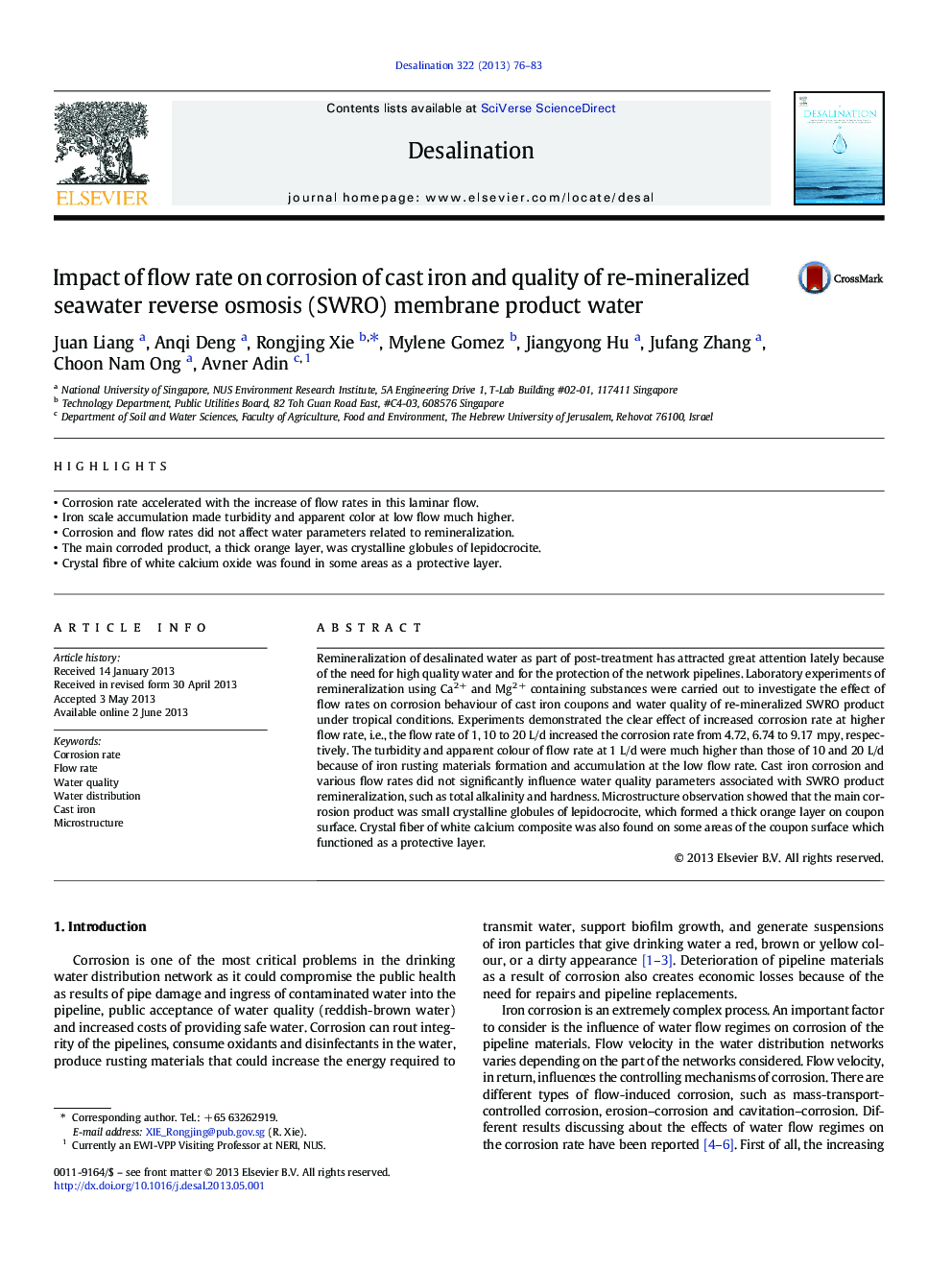| Article ID | Journal | Published Year | Pages | File Type |
|---|---|---|---|---|
| 623993 | Desalination | 2013 | 8 Pages |
Abstract
Remineralization of desalinated water as part of post-treatment has attracted great attention lately because of the need for high quality water and for the protection of the network pipelines. Laboratory experiments of remineralization using Ca2Â + and Mg2Â + containing substances were carried out to investigate the effect of flow rates on corrosion behaviour of cast iron coupons and water quality of re-mineralized SWRO product under tropical conditions. Experiments demonstrated the clear effect of increased corrosion rate at higher flow rate, i.e., the flow rate of 1, 10 to 20Â L/d increased the corrosion rate from 4.72, 6.74 to 9.17Â mpy, respectively. The turbidity and apparent colour of flow rate at 1Â L/d were much higher than those of 10 and 20Â L/d because of iron rusting materials formation and accumulation at the low flow rate. Cast iron corrosion and various flow rates did not significantly influence water quality parameters associated with SWRO product remineralization, such as total alkalinity and hardness. Microstructure observation showed that the main corrosion product was small crystalline globules of lepidocrocite, which formed a thick orange layer on coupon surface. Crystal fiber of white calcium composite was also found on some areas of the coupon surface which functioned as a protective layer.
Related Topics
Physical Sciences and Engineering
Chemical Engineering
Filtration and Separation
Authors
Juan Liang, Anqi Deng, Rongjing Xie, Mylene Gomez, Jiangyong Hu, Jufang Zhang, Choon Nam Ong, Avner Adin,
